A podcast for a million. Success story and walkthrough
Introduction.
It will be about the podcast, which tells about the underground music subculture drum & bass.
The program is called Neuropunk and, in due time, it became a phenomenal phenomenon on the electronic scene of Russia. Until now, his ratings can not beat even pop podcasts, broadcasts and mixes from promoted media DJs. Neuropunk's releases on the main Russian resource dedicated to electronic music promodj.com always take the first place in the top 100 , despite the fact that drum & bass audience is hundreds of times smaller than the audience of commercially promoted styles. The approximate audience coverage of the podcast is about a million people. And this is without financial investments, without advertising, without media support.

How is this possible and how to repeat it, you ask? To tell about this I sat down to write this text.
I would like to give any DJ, promoter, musician an additional step-by-step guide on how to make a quality product in order to gain unlimited audience confidence, raise my authority and get the opportunity to develop a certain scene by leaps and bounds.
In this article, I will discuss how the Neuropunk was implemented from the very beginning, all the technical and psychological aspects. I hope this will help the real enthusiasts and lovers of his musical sabzhanr to help him to open up in full bouquet.
If you already feel that you have something to tell people, and a steady stream of new material on your musical subject is coming to you, then it is time to perform a dozen of the steps described below and light a new fire on your stage!
Attention! The guide will not be tips on how to make money! Although the audience of my podcast is huge, by the standards of the underground, I do not earn on it. Firstly, I am a person without a commercial vein and simply do not know how to do this, secondly, the primary goals for me have always been the development of my favorite style of music and self-realization.
')
The time has come

Everyone remembers the times how, at the end of the 90s, electronic music burst into the informational ether of the planet, thanks to the ever-growing technical progress. There was a bunch of trends, classified mainly by bpm speed, the construction of the rhythm section and the presence of sequences of certain synthesizers and basins.
I won't talk a lot about drum & bass, everything is on the wiki . I can only say that in Russia the style appeared and began to develop from the mid-90s. I started my DJ career in the same years. At first, we moved simply like DJs - we bought vinyl records in England and organized parties in clubs, introducing people to new sounds.
In our country, musicians who had iron synthesizers and tried to write dnb, could be counted on the fingers of one hand. Elite owners of IBM 386 mastered the trackers . But by the beginning of the 2000s computers became more accessible to the masses, software also began to appear, allowing to create high-quality compositions without hardware and studios. On the sly, the number of musicians began to grow.
At that stage, all this was wildly frivolous, as there was no underground music industry in the country. There was a global lack of information. But then the Internet appeared, and the production scene moved forward at a record pace. By 2005, I already had a label with five years of experience, which released thirty CD releases with Russian musicians and organized for a hundred events. Those. There was a successful experience with the stage, promotion and promotion to the masses. But all this movement was at the local level and was limited only to the cities of one million people in the country, where there were small groups of style fans and occasionally organized parties. Around the same time, a new kind of content from Western top DJs - a podcast - appeared on the network. Something like a radio show, but for the network. Mix, plus the lead story about the musicians and the scene.
At first it was hard for me to collect even just a mix of Russian tracks. In general, there was already enough content, but the level of its production was below the baseboard. And I waited, at the same time helping all that I could, to those who tried to write dnb and gave hope. The young people assiduously botanized manuals, saved up money on monitors and wrote, wrote, wrote.
And now, the time has come. By January 2007, I was able to collect 18 acceptable tracks of quality from the post-Soviet space. I brought them into a lousy by modern standards mix and laid out in the network .
Neuropunk

I called my work Neuropunk.ru, opaquely hinting that the product is fully and entirely devoted to the work of Russian-speaking musicians.
I myself am a patriot, and this is one of the main forces driving me. But, as described above, being a man without a commercial vein, I did not even think about immediately buying this domain, since made absolutely no stakes on the future of the podcast. Subsequently, I had to abandon the prefix. The domain was purchased by unidentified people immediately after the first successful releases.
Moral - get ready for success immediately, just in case.
The word Neuropunk itself is a modification of the name of the suburbs neurofunk . I have always been an adept of this particular understyle and dealt mainly with it.
The first three parts of the Neurpunk were simple mixes. Were posted on thematic resources. Their figures were low: 500-700 downloads, but, at that time, such numbers were considered good for a small underground niche. Inspired by this “success,” I decided to follow the example of Western colleagues and talk during the broadcast.
In the fall of 2008 I collected and brought together the 4th part of the podcast , during which I tried to tell about each track and author, inserted some DJ slang, tried to joke. Experience of oratory was a bit. He limited himself to 5 years of officer training at the Higher Educational Institution and a small number of radio broadcasts on the Record. With the help of a friend, a talented sound engineer Sasha Exrʻa, who was still beginning then (I’m at istinspring ), I tried to make the sound of the product as high as possible so that it would not be a shame to the west.
istinspring processed the voice track and assembled the first pillar of the podcast master. I rendered mp3, for some inner influx, made a cover with a bare female breast , to enhance the marketing effect, and uploaded the podcast to the network.
When I woke up the next day at lunch, I could not believe my eyes - the download figures for the podcast approached the mark of 5,000 unique ones.
Success

5 years have passed since then. The podcast from the pitiful attempts to express themselves and the national scene has grown into a powerful product, with a large audience and has become very respected in the west.
The number of downloads only on resources controlled by us ranges from 70-100 thousand unique for each release. There is a giant cross-sharing, which is unrealistic to track, as well as word of mouth and dubbing of podcasts to discs and mp3 carriers offline. The total number of downloaded files of all parts of the podcast, special issues, versions without voice has exceeded 10 million files. By the standards of popular videos on YouTube is a trifle, but by the standards of a small underground dub niche, and indeed, by the standards of popularity of DJ mixes in the country - the result is top.
But the main thing is not even statodothy. The main thing is that we managed to create a powerful, unified scene of a separate sub-genre, in terms of the strength and quality of production, which is not inferior to its British and Western European counterparts. We found and raised dozens of excellent musicians who are now successful all over the world, and whose tracks are played on top radio stations all over the planet. We have created a loyal and strong audience, which really supports your favorite scene, and does not follow fashion trends, which marketers impose.
And all this - thanks to the one and a half hour program, which is issued once, in two or three months!
Now there is enough water and a prehistory. Let's get to the point.
1. Creating a podcast
1.1. Track selection

Primary selection
To receive content from producers, you must have credibility and weight on stage, or some sort of credible strong idea. Producers are always afraid to send dablets (unreleased material) to strangers in order to avoid network leakage before release.
The organization of the reception of the demo material can be any to your taste. Personally, I created a special box for receiving demos on gmail , opened a dropbox on soundcloud and constantly check everything that is sent on social networks. Work routine and requires a lot of time. We must understand that without work 24/7, without this routine, it will not work.
Over time, having gained experience and adjusting your ears, you will easily cope with wiretapping demo. It happens to me like this: I poke into the intro, then into the first drums. On the drums it is already clear to me what the production of the track will be. Then I listen to the first snot (pit, failure) and the first drop (transition from the pit to the main part of the track). These three ticks are usually enough to understand - does it make sense to listen to the entire track.
Acceptable by my criteria, the tracks I put in a separate folder. When 80-100 tracks accumulate in the folder, I proceed to the secondary selection.
Secondary selection
When selecting tracks in a mix, there are only two main criteria:
a) Track production quality.
b) The presence of hits or a clearly expressed idea of the track, which may consist in a swing groove, an interesting story of the arrangement, original musical moves, etc.
Both criteria are approximately equal in priority. But it happens that a musician sends a fresh, original idea in a poor performance. This is an exception. Here you need to personally help the musician to improve production or appoint a curator. It is also possible to record a collab (collaboration).
From the total number of accumulated tracks, I select 30-40 of the brightest. The average time of my podcasts is an hour and a half. Just enough to get to work and emotionally charged in the morning.
1.2. Structure and mix mix

The order of the tracks in the mix is extremely important. It is necessary to understand that, having covered everything in a row, indiscriminately, you can get disgusting taste and not readable mash. I love individually milk, pickles and chocolate. But I will not cook soup from this. Each dish has its time, and the transition between them should be smooth, beautiful and emotionally logical.
For Neyropank, I eventually developed the ideal narrative formula, consisting of three main blocks. First come the most hit tracks, dance floor action movies that I play on tour. 100% working material. This unit smoothly flows into a fat, deep and powerful neurofunk. The last block is light and deep tracks, so that a person will have positive and good emotions from listening to the program. Those. the energy of my mixes is always descending. Sometimes it is possible a small attack by the first track in ascending order. Depends on the specific situation and ideas of the release idea.
Transitions between blocks should be made as logically smooth as possible.
In Western podcasts, there is often a pattern of sharp division of blocks, with the help of announcing jingles, which is also the case. But with this scheme, the integrity of the product is lost.
A separate paragraph deserves the first track. It should be work with a terrific intro, which will set the mood of the mix for the rest of its listening time. It depends on the choice of the first track - whether a random person, possibly a future fan of your program, will continue listening to him. It should always be a real hymn, remember this!
The placement of tracks in the mix can take a long time. Selection of smoothly flowing keys and emotional change of tracks should work perfectly on each other. Avoid atonal reports! Solitaire from a pile of tracks of different character and tonality can always be folded in the order you need. Just attach a little diligence, do not be lazy! My arrangement of tracks in the mix sometimes, in the most difficult cases, takes up to 2 weeks of daily search for the perfect configuration.
Remember, each release of your podcast should be listened to in one go, like an interesting and dynamic movie. The key role here is precisely the order of the tracks and the proper distribution of energy in the mix. Experienced DJ with experience this distribution is not difficult.
To mix the mix, everyone can use methods that are convenient for him, including live turntables. I use the software, because I think that the studio mix, as a whole piece, should be the benchmark without a single flaw. For the information of the ideal dream mix, I use the program MixMeister Fusion . It slightly spoils the sound when rendering due to imperfect stretching algorithms, but I am ready to put up with this, thanks to the most convenient interface for operational work.
Mix view at mixing:

Blue, orange and purple automation is an imitation of live information. Removing and interchanging low, mid, high frequencies, while playing two tracks at the same time, in order to avoid conflicts and clips. Imitation crossfading.
Do not forget to select the Turntable Mode for a realistic stretch in the settings of each track.
The volume on the master, I put -4, just in case, in the final stand of the podcast all pull back.
In general, working with the program is elementary and intuitive, and it does not make sense to describe it in detail in this manual.
At the end of the mix build and satisfaction with its configuration, render .wav and put it in a folder.
Be sure to check the mix background several times, for example, while playing your favorite game.
1.3. Voice recording
In the first releases of the podcast, I recorded the voice using the Dialog M201A headset, which cost 100 rubles. A year later, she naturally broke down, and I bought Sven HM40BK for 300 rubles.
Now I have a T.Bone SC 440, but I continue to write to Sven, for lack of an acoustically prepared room for voice recording.
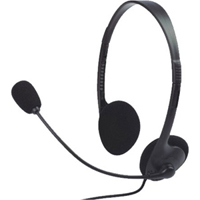

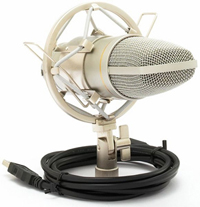
Why these three examples? Moreover, the choice of device for recording voys is not particularly critical, especially at the beginning of the development of your product. It's all about processing your recorded track. This is really important, because with proper equalization, noise reduction and compression, you can get a clear and sonorous voice even from the source code recorded via cheap game headsets.
These headsets are good because they perfectly capture the most important places for voice readability in your speech and are almost indifferent to the reverberation effect of any room.
You can write any software that allows it to do. I, in the old manner, use Adobe Audition 2.
Before recording the voice, I first interrogate all the musicians from the tracklist. I recognize the fate of each track, ask a little bio for beginners. I collect info about upcoming events, etc. I am preparing an information block. All this is briefly written in a text file. If you have everything difficult with improvisation, then, some difficult speech moves can be pre-recorded literally, so that it is easier and more confident to make a transfer.
I especially recommend registering a greeting. At the beginning of the mix, it is always the most difficult to speak, but, somewhere in the middle, you already fully master and swim confidently.
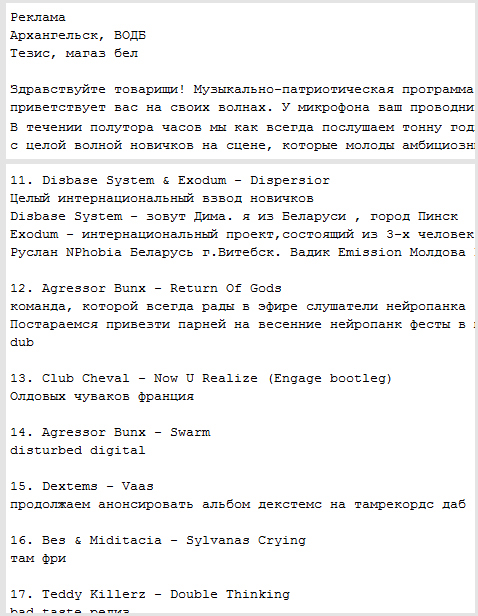
Do not forget to put a glass of drink next to moisten a throat that is dry from excitement.
So, turn on the finished mix in the headphones, press the recording and start the broadcast.
Track view after recording:
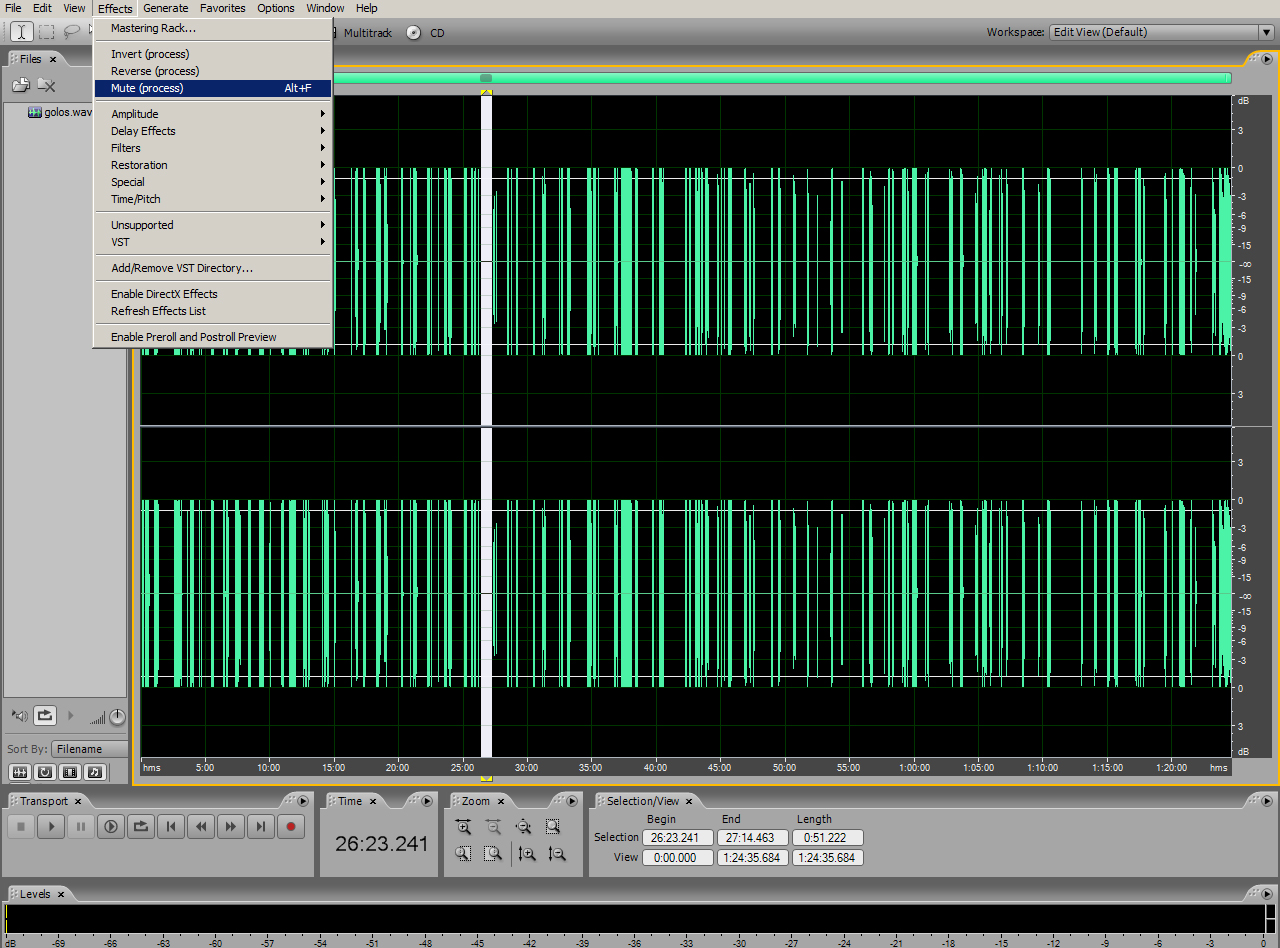
As you can see, the pauses between phrases are thoroughly cleared of background high-frequency noise using the Mute function. This is a fee for a cheap microphone and one of the most disliked stages in the podcast preparation process. On the other hand, it is an additional control over the errors and omissions made in the text, with the possibility of correcting them at an early stage. Of course, lazy people can try to do with noise-canceling systems like Waves Z-Noise , but the ideal result can be achieved only with the help of painstaking cutting of each pause.
Owners of good microphones and acoustically isolated rooms this nudyatina does not threaten.
After cleaning and checking the voice, save .wav to the folder.
1.4. Build and Design your Podcast
I compile a podcast also in Audition.
Type of finished podcast:

As you can see, it consists of several parts: a mix, a voice and design elements.
By mix and voice, everything is clear, let's proceed to the design.
At the beginning of the transfer is always branded jingle. You can record it yourself or at a jinglemaker. I limited myself to the synthesized voice of the ATARI speech robot, which is well suited to the concept of my podcast - cyberpunk and futurism.

You can also insert jingles or greetings from key podcast artists during the show. This will revive him.
Often, even before the introductory jingle, I insert decorative elements, in the form of clippings from old, cult films, in accordance with the current concept of each issue. This gives the transfer a powerful kurazhniy impulse from the first seconds.
In the end, sometimes I add decor in the form of clippings of couplets of domestic rap songs, filtered to simulate playing in the external environment. The trick is taken from old hip-hop clips. Couplets should be motivating and applicable to the prism of the overall release concept.
Of course, this is personal preference and a tribute to the roots of style. You can come up with your own design chips, everything is limited only by the power of your imagination.
1.5. The final version
a) Mix Stand
Since the production of the tracks I selected is at a decent level, nothing hangs on the channel except the C4 multi-band compressor, which is used in the dynamic equalizer mode.

b) voice stand
The first is DeEsser , for the suppression of hissing hiss consonants.

Next is the paragraph equalizer Q10 . istinspring , , - , 400-500, , “” .
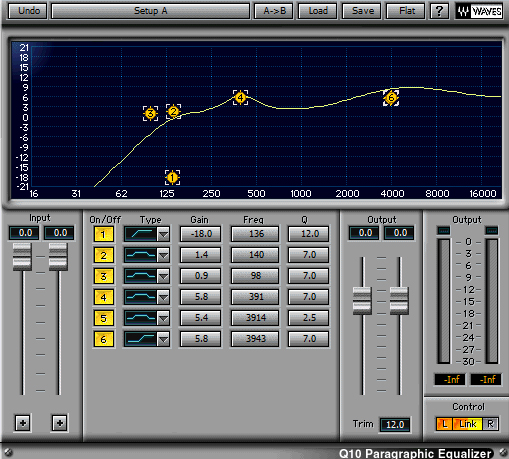
, - « ». , Sven , .
RComp L3 , “ ”, , , .
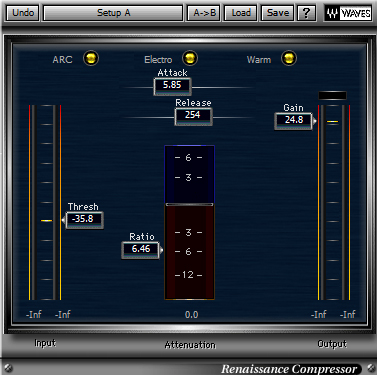

)
URS Series EQ , - ( , ..)
, , 128 3.
. .

L2 , RMS . -11.
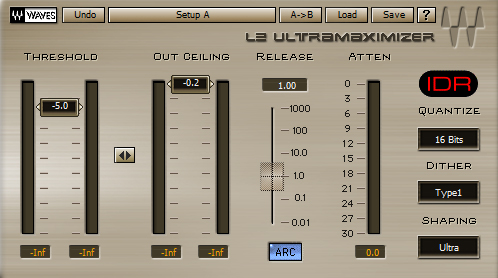
) ,
.
! !
2.
128 3. , , , , . – , . , . , , . , , .

, 128, , 320, . .
, , . . , .

, , .
3!
, .
, , :
— tamrecords.ru
— , promodj.com
— vk.com
— facebook.com
— drum&bass dnbarena.ru
, . , – . – . . .
, . 5-6 .
. , , plug.dj .
. - .
400 , . -. , .
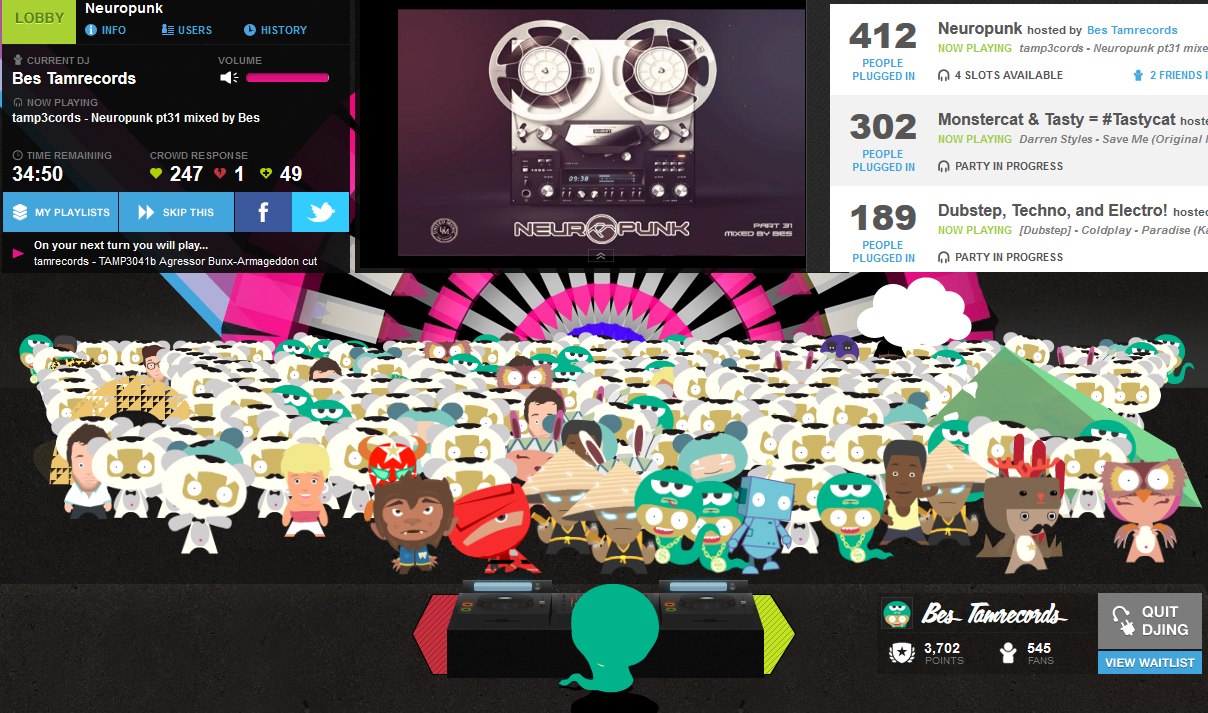
3.
, , . , .
, . , . , , . . – . : , – , . – .
, « », , , , , , , . – , , . , - , , «» .
, , . !
- «» . ! , , . !
, . , , . — .
- . 40 .
. , . , , - . 2-4 .
best of the best, ( ).
. . – . , . . , .
, :
1. , .
2. , , , -, !
3. .
4. , .
5. 1 2!
- . , , .
, 28 , , . .
! , , - – . , , , . , , - . !
, , , . . « », 30% . . .

, , , .
Source: https://habr.com/ru/post/194420/
All Articles